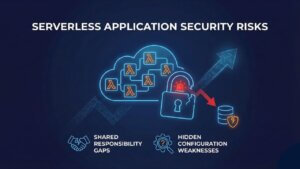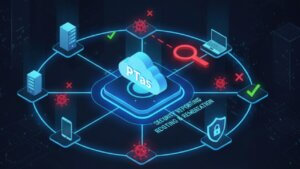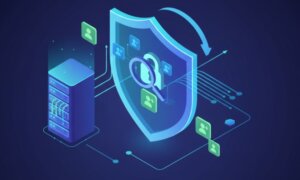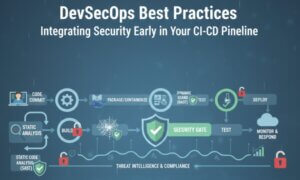As businesses and individuals alike rely increasingly on cloud technologies for storage, processing, and collaboration, the importance of robust cloud security and efficient data management has skyrocketed. The future of these domains is not just about evolution—it is about revolutionizing how we think, protect, and manage our digital assets. This blog explores the transformative trends shaping cloud security and management, offering insights into what lies ahead.
The Current Landscape of Cloud Security and Management
Cloud computing has become a cornerstone of modern business operations, offering scalability, flexibility, and cost efficiency. However, with these advantages come challenges:
Increasing Cyber Threats: Ransomware, phishing, and advanced persistent threats are on the rise, targeting vulnerabilities in cloud systems.
Data Sprawl: The proliferation of data across multiple cloud platforms makes management and protection increasingly complex.
Compliance Mandates: Regulations like GDPR, HIPAA, and CCPA require stringent data protection measures, adding layers of complexity to cloud management.
Organizations must adopt a forward-thinking approach to address these challenges, leveraging advanced technologies and innovative strategies.
The Role of Emerging Technologies
1. Artificial Intelligence (AI) and Machine Learning (ML)
AI and ML are game-changers in detecting and mitigating threats:
Predictive Analytics: AI can analyze patterns and predict potential security breaches before they occur.
Automated Responses: ML algorithms enable real-time threat detection and automated responses to mitigate risks.
Enhanced Data Insights: AI-driven analytics help organizations understand data usage, compliance gaps, and optimization opportunities.
2. Zero Trust Architecture
The Zero Trust model, which operates on the principle “never trust, always verify,” is becoming a gold standard for cloud security. Its features include:
Micro-Segmentation: Dividing networks into smaller segments to minimize the spread of threats.
Continuous Verification: Regularly validating user identities and device integrity.
Least Privilege Access: Granting users access only to the resources they need.
3. Quantum Cryptography
As quantum computing evolves, traditional encryption methods may become vulnerable. Quantum cryptography offers:
Quantum Key Distribution (QKD): Secure communication through quantum mechanics.
Future-Proof Security: Resilience against the computational power of quantum computers.
The Evolution of Cloud Data Management
Efficient data management is critical for leveraging the full potential of cloud computing. The future of cloud data management focuses on:
1. Intelligent Data Classification
AI-driven tools can automatically classify data based on sensitivity, usage, and compliance requirements. This enables:
Streamlined Governance: Ensuring data is stored and processed in compliance with regulations.
Cost Optimization: Prioritizing resources for high-value data.
2. Unified Multi-Cloud Management
Many organizations adopt multi-cloud strategies to avoid vendor lock-in. Unified management platforms simplify:
Visibility: Providing a single pane of glass for monitoring data across multiple clouds.
Control: Enabling consistent policies and configurations across platforms.
Integration: Streamlining workflows between cloud environments.
3. Automated Data Lifecycle Management
Automation tools manage data from creation to deletion, ensuring:
Retention Compliance: Adhering to industry-specific retention policies.
Efficient Archiving: Safeguarding historical data while reducing active storage costs.
The Impact of Regulatory Changes
Data protection regulations are continuously evolving. Businesses must stay ahead by:
Adopting Privacy-First Approaches: Embedding privacy considerations into every aspect of cloud operations.
Leveraging Compliance Tools: Utilizing cloud provider solutions like AWS Audit Manager and Azure Compliance Manager.
Regular Training: Ensuring teams are up-to-date with regulatory requirements.
Best Practices for the Future
Organizations can future-proof their cloud security and data management by adopting these practices:
1. Invest in Advanced Encryption
Encryption will remain a cornerstone of cloud security. Future-focused strategies include:
Homomorphic Encryption: Allowing computations on encrypted data without decryption.
Post-Quantum Algorithms: Preparing for quantum-resistant encryption standards.
2. Enhance Identity Management
Strong identity management frameworks reduce unauthorized access risks. Key steps include:
Biometric Authentication: Leveraging facial recognition, fingerprints, and other biometrics.
Adaptive Access Control: Adjusting access based on user behavior and location.
3. Focus on Continuous Improvement
The cloud landscape is dynamic. Regularly assess and update:
Security Policies: Aligning with the latest threats and technologies.
Infrastructure: Upgrading to meet evolving business needs.
Training Programs: Equipping staff with the knowledge to handle emerging challenges.
Preparing for the Unpredictable
The future of cloud security and data management is both exciting and uncertain. Cyber threats will continue to evolve, and technological advancements will bring new opportunities and challenges. Organizations must:
Be Proactive: Anticipate risks and adopt preventive measures.
Stay Agile: Adapt quickly to changing circumstances and technologies.
Collaborate: Partner with cloud providers, industry experts, and peers to share knowledge and strategies.
Conclusion
The revolution in cloud security and data management is not just about technology; it’s about transforming mindsets and operations. By embracing innovation, prioritizing security, and committing to continuous improvement, businesses can protect their data, ensure compliance, and thrive in the digital age. The future is in the cloud—make sure your organization is ready to dominate it.
Why Businesses Trust SecureMyOrg for Comprehensive Network Security
At SecureMyOrg, we uncover and fix all possible security vulnerabilities of mobile and web, while providing solutions to mitigate risks. We are trusted by renowned companies like Yahoo, Gojek and Rippling, and with 100% client satisfaction, you’re in safe hands!







Some of the things people reach out to us for –
- Building their cybersecurity program from scratch – setting up cloud security using cost-effective tools, SIEM for alert monitoring, building policies for the company
- Vulnerability Assessment and Penetration Testing ( VAPT ) – We have certified professionals, with certifications like OSCP, CREST – CPSA & CRT, CKA and CKS
- DevSecOps consulting
- Red Teaming activity
- Regular security audits, before product release
- Full time security engineers.
Relevant Posts

Why Weak Serverless Application Security Puts Your Business at Risk
Weak security in serverless environments often goes unnoticed until it leads to real damage. Misconfigured triggers, broad permissions, and poor visibility can expose sensitive data and disrupt business operations. Understanding where the risks appear is the first step toward building safer, more reliable serverless applications.

What Is Penetration Testing as a Service?
Penetration testing as a service (PTaaS) lets experts simulate real attacks to uncover vulnerabilities before hackers do. This guide explains the process, benefits, and costs, helping businesses strengthen defenses with predictable, ongoing security checks.

How To Inspect Encrypted Traffic Without Breaking Privacy
Network administrators face a challenge: securing systems while respecting privacy. This guide explains how to inspect encrypted traffic without breaking privacy using metadata, anomaly detection, and machine learning ensuring visibility, compliance, and trust.

How to Audit Infrastructure as Code (IaC) for Security Vulnerabilities
Discover how to audit Infrastructure as Code (IaC) for security vulnerabilities with this practical guide. Learn to scan IaC files using tools like Checkov, fix issues like exposed resources, and integrate audits into CI/CD pipelines. Protect your cloud systems from misconfigurations and ensure compliance with clear, actionable steps.

DevSecOps Best Practices: Integrating Security Early in Your CI/CD Pipeline
This article provides a practical guide to embedding security into every stage of your CI/CD pipeline. Learn core DevSecOps best practices like SAST, DAST, dependency scanning, secrets management, and compliance automation to catch vulnerabilities early, foster a culture of shared ownership, and build a secure-by-design development process that accelerates release cycles.

5 Cloud Misconfigurations That Lead to Data Breaches
Cloud misconfigurations are one of the leading causes of data breaches, yet they’re also among the most preventable. From exposed storage buckets to weak IAM policies, attackers exploit these mistakes daily. Learn about the top 5 misconfigurations and how your organization can fix them before they lead to costly data exposure.
